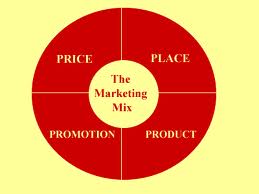Marketing

Red Bull GmbH is a multinational beverage company based in Austria that sells a famous Red Bull energy drink. The company sells its products in 162 countries, and 4,204 billion cans of Red Bull were sold during the year of 2010 alone (Company Figures, 2011, online). The company product range consists of Red Bull drink, Red Bull sugar free, Red Bull Cola and Red Bull energy shots. Its mission statement is: “We are dedicated to upholding Red Bull standards, while maintaining the leadership position in the energy drinks category when delivering superior customer service in a highly efficient and profitable manner” (Mission/Values, 2011, online) This article represents a report that presents analysis of marketing communication strategies of Red Bull in two countries – UK and China. The article comprises the review Red Bull’s current marketing communication strategy in UK and China and formulates recommendations for improvement and change for the company. Red Bull GmbH Report contains the application of the major analytical strategic frameworks in business studies such as SWOT, PESTEL, Porter’s Five Forces, Value Chain analysis and McKinsey 7S Model on Red Bull GmbH. Moreover, the report contains analyses of Red Bull’s business strategy, leadership and organizational structure and its marketing strategy. The report also discusses the issues of corporate social responsibility. Review of the Current Practice Red Bull’s Marketing Communication Strategy Usage of Marketing Communication Strategies by Red Bull Marketing has been identified as one of the most crucial aspects of the business by Red Bull along with many other businesses. Red Bull relies in marketing communication in order to conduct its marketing strategy. Marketing communication can be defined as “all communication activities an organisation undertakes to promote its agenda to its audiences” (Gillis, 2006, p.392). Marketing communication mix, on the other hand, has been defined as “a number…

Marketing mix is one of the most popular theoretical frameworks in marketing that has been used by companies in order to make marketing and other decisions in a more efficient manner. Companies have concentrated on various elements of marketing mix as a source of competitive edge according to the strategy adopted by senior level management in order to achieve long-term aims and objectives. The potential contribution of marketing in terms of obtaining competitive edge has been realised by management of many successful businesses therefore, the attention to this specific area of business practice has become greater than ever before (Egan, 2007). Accordingly, today most of the concepts associated with marketing such as marketing mix, product life-cycle, PEST and SWOT analysis, Porter’s Five forces, Value-Chain analysis and others attract more interest than ever before and these marketing concepts are finding their practical applications among increasing number of businesses. Marketing mix, otherwise known as 4Ps can be highlighted as one of the fundamental concepts in marketing and focuses on four aspects of the business practice: product, price, promotion and place (Klein, 2007). The practical application of marketing mix by companies varies according to their size, chosen business strategies, geographical location, competitive edge and a range of other factors. According to Kumar (2010), marketing mix is the terms used to describe the combination of methods employed by a business in order o achieve its objectives by marketing its products and services effectively to a specific target group. Bootwala et al (2009) mention the definition of marketing mix as offered by Philip Kotler according to which “marketing mix is a set of controllable variables and their levels that the firm uses to influence the target market” (Bootwala et al, 2009, p.3.1). Evolution of Marketing Mix Kitchen (2010) informs that the theory of marketing…

Gap Inc. is a San Francisco based American retailer which sells clothing and accessories. The company was founded in 1969 by Donald and Dorris Fisher. The aim of the company is to help people to express their personal style throughout their life. The company comprises five brands: Gap, Banana Republic, Old Navy, Piperlime and Athleta. The company has 3465 stores worldwide with spores in Canada, France, Ireland, Japan, UK and US owned by the company and stores in other companies are operated by franchisers. Advertising Print and broadcast ads. Gap uses print and broadcast ads intensively both in UK and USA placing advertisements in newspapers and broadcasting its ads in some TV channels in both continents. Along with traditional print and broadcast advertising, sometimes original marketing campaigns are launched, which proved to be memorable and highly efficient in numerous occasions. For instance, Gap launched a print and television advertising campaign, “Favourites” in 2005 with the participation of acclaimed musicians, including Brandon Boyd, Alanis Morisette, Liz Phair, Joss Stone, Keith Urban and others, where each musician performed an original remake of their favourite song wearing their favourite Gap jeans. Packaging outer. The outer packaging for the products of the company is being used as efficient advertising medium by Gap with the eye-catching company logo displayed in large font in it. Billboards. Being one of the most efficient advertising tools, billboards are used by Gap Inc. both in UK and USA. However it is more intensively used in US cities than in UK. Point-of-purchase displays. This advertising tool refers to products being displayed within the point of purchase area in a way that it is convenient to add them to their shopping basket for the people who are already paying for other items. These are usually items that are small in…

Product placement is a marketing strategy that has accidentally evolved a few decades ago. Nevertheless, the efficiency of the product placement has been spotted by professionals and since then various companies engage in product placement activities in various levels with varying efficiency. One of the main differences of product placement from other marketing strategies is the significance of factors contributing to it, such as context and environment within which the product is displayed or used. Implementing an efficient marketing strategy is one of the essential conditions for a product to be successful in the marketplace. Companies may choose different marketing strategies including advertising, channel marketing, internet marketing, promotion, public relations, product placement and others. Each of one of these marketing tools has its advantages and disadvantages and the rationale behind the choice among these tools relates to the type of the product, type of the market and the marketing strategy of the company. Product placement among them is one of the marketing strategies which have evolved recently. In product placement a product is placed in a movie or television show in exchange for payment of money or other promotional consideration by the marketer (Gupta & Gould, 1997). According to Cowley& Barron (2008, p.91), as taken from Parrish, auto industry has been among the very first industries to use product placement as a marketing strategy. One of the automobile companies which use product placement strategy heavily to promote its cars is Aston Martin – a British manufacturer of luxury cars. There have been many researches on the subject of product placement undertaken by different authors at different points of time. The use of product placement as an effective marketing strategy has intensified mainly during the last three decades. According to DeLorme& Reid(1999), until recently studies on product placement have been generally…

Integrated Marketing Communications is described as “a concept of marketing communications planning that recognizes the added value of a comprehensive plan that evaluates the strategic roles of a variety of communication disciplines and combines these disciplines to provide clarity, consistency and maximum communications impact” (Belch and Belch, p.22 ). Integrated Marketing Communication in explained by Lee (1996, p.34) as ‘a new way of looking at the whole, where once we saw only parts such as advertising, public relations, sales promotion, purchasing, employee communication, and so forth, to look at it the way the consumer sees it – as a flow of information from indistinguishable sources’ Iacobucci and Calder (2003, p. ) specify the difference of integrated marketing from the traditional marketing by the fact that the main focus of the integrated marketing is on on-to-one marketing, relationship marketing or database marketing. This idea is supported by Schultz et al (1993, p.) who claim the main attention of integrated marketing to be on communication. The benefits of the Integrated Marketing Communications is listed in MMC Learning (online, 2010) as the following: • Integrated Marketing Communications initiates and maintains communication with customers. This leads to the increased level of customer satisfaction and the consolidation of image for the company; • The level of customer loyalty can be increased significantly through the use of Integrated Marketing Communications due to the strong bond between customers and the company it creates. • Increased level of profitability can be resulted by the use of the Integrated Marketing Communications due to the fact that the latter increases the overall efficiency of the company. • Messages sent to the customer through Integrated Marketing Communications are usually more consistent and this increases its credibility • Duplication of marketing and other efforts are eliminated in Integrated marketing Communications, therefore company…

Marketing communication is a crucially important component of any business practice. A company may produce high quality products or offer superior services at an attractive prices, however if an efficient marketing strategy is not in place, potential customers would not know about these products and services, therefore the business loses potential revenues. Moreover, in today’s highly competitive marketplace in any industry this way the business may go bankrupt as well. As it has been noted, “marketing communications is anything your organisation does that affects the behaviour or perception of your customers” (Callen, 2009, p.2). “Setting marketing communications objectives is important because: it acts as a means of assessing how best to build ongoing dialogues with audiences in order to maintain brand narrative and sustain competitive advantage; it provides a check in the use of marketing resources in the process of communicating; and it provides some arbitrary mechanism for evaluating the progress and cost of deploying these resources against budgets, previous campaigns and the competition” (Dahlen et al, 2009, p.93). According to Egan (2007) marketing communication objectives can be classified into three broad categories: Knowledge-based objectives. This form of marketing communication objectives aim to stimulate awareness and interest, as well as obtain attention. Feeling-based objectives. These categories of marketing objectives aim at creating positive associations and values with a brand and contribute to the development of the brand identity. Action-based objectives mainly concentrate on the volume of sales through building and maintaining strong customer relationships. Various factors will determine the combination of marketing communications strategies implemented and will also depend on other factors ranging from the type of industry to the actual target market. Ignoring these factors and simply executing strategies on a whim without careful analysis can lead to an unsuccessful launch or flood of problems on the international industry. It…
Dutka (1995) informs that DAGMAR model stands for ‘Defining Advertising Goals for Measured Advertising Results’ and is one of the most approaches to the advertising planning process. According to DAGMAR model a potential customer goes through four steps before making a purchase: 1. Awareness 2. Comprehension 3. Conviction 4. Action References Dutka, S, 1995, “Dagmar: Defining Advertising Goals for Measured Advertising”, NTC Business Books
